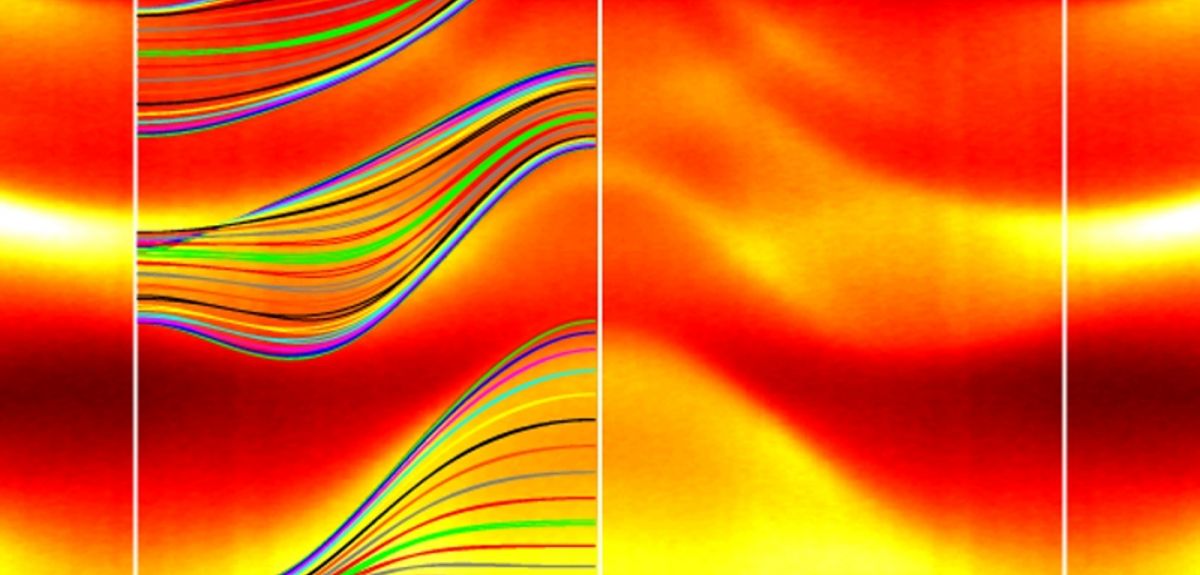
Material like '3D graphene' promises new electronics
The discovery of a material that has a similar electronic structure to graphene but can exist in three dimensions, instead of a flat sheet like graphene, could lead to faster transistors and more compact hard drives.
An international team, led by scientists from Oxford University, Diamond Light Source, Rutherford Appleton Laboratory, Stanford University, and Berkeley Lab's Advanced Light Source, has discovered that sodium bismuthate can exist as a form of quantum matter called a three-dimensional topological Dirac semi-metal (3DTDS).
Scientists have long been searching for a natural 3D counterpart to 2D graphene (a one atom thick layer of carbon that is prized for its electronic properties). Whilst 3DTDS states had been predicted by theorists this is the first experimental confirmation that such a type of material exists and could lead to the discovery of many more exotic materials.
A report of the research is published in Science.
'The 3DTDS we have found has a lot in common with graphene and is likely to be as good or even better in terms of electron mobility – a measure of both how fast and how efficiently an electron can move through a material,' said Dr Yulin Chen of Oxford University's Department of Physics, lead author of the report.
'You can think of the electronic structure of the 3DTDS as being rather like that of the graphene – the so called ''Dirac cone'' where electrons collectively act as if they forget their mass – but instead of flowing masslessly within a single sheet of atoms, the electrons in a 3DTDS flow masslessly along all directions in the bulk.'
Moreover, unlike in graphene, electrons on the surface of the 3DTDS remember their 'spin' – a quantum property akin to the orientation of a tiny magnet that can be used to store and read data – so that the magnet information can be directly transferred by the electric current, which could enable faster and more efficient spintronic devices.
'An important property of this new type of material is its magnetoresistance – how its electrical resistance changes when a magnetic field is applied,' said Dr Chen. 'In typical Giant Magnetoresistance Materials (GMR) the resistance changes by a few tens of percent and then saturate but with 3DTDS it changes 100s or 1000s of percent without showing saturation with the external magnetic field. With this much larger effect we could make a hard drive that is higher intensity, higher speed, and lower energy consumption – for example turning a 1 terabyte hard drive into a drive that can store 10 terabytes within the same volume.'
Whilst sodium bismuthate is too unstable to be used in devices without proper packaging the discovery is likely to start a rush to find many other materials that can exist in the same quantum state.
Dr Chen said: 'Now that we have proved that this kind of material exists, and that such compounds can have one of the highest electron mobilities of any material so far discovered, the race is on to find more such materials and their applications, as well as other materials with unusual topology in their electronic structure.'
A report of the research, entitled 'Discovery of a Three-dimensional Topological Dirac Semimetal, Na3Bi’, was published in Science, 16 January 2014.
 Expert Comment: Chatbot-driven sexual abuse? The Grok case is just the tip of the iceberg
Expert Comment: Chatbot-driven sexual abuse? The Grok case is just the tip of the iceberg
 New study finds that stopping weight-loss drugs is linked to faster regain than ending diet programmes
New study finds that stopping weight-loss drugs is linked to faster regain than ending diet programmes